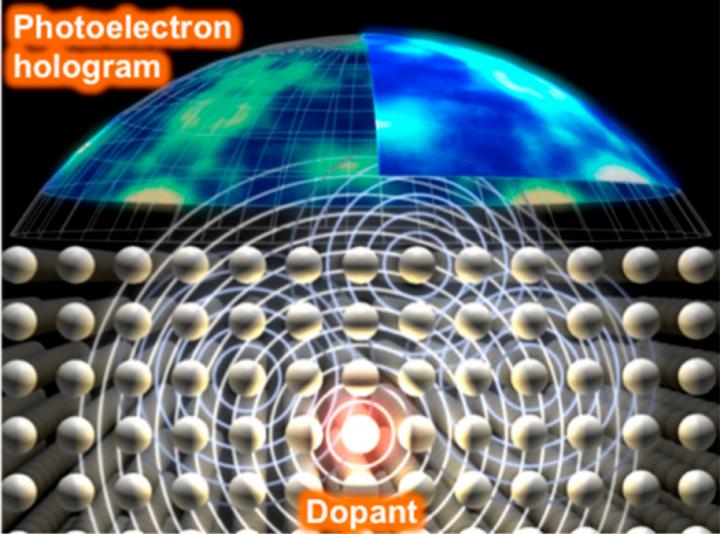
Soft X-rays excite the core level electrons, leading to the emission of photoelectrons from various atoms, whose waves are then scattered by the surrounding atoms. The interference pattern between the scattered and direct photoelectron waves creates the photoelectron hologram, which may then be captured with an electron analyzer.

These inorganic 'flowers,' color added, were created by Sandia National Laboratories researcher Stanley Chou and University of California, Merced colleague Vincent Tung in a spray-printing process that uses molybdenum disulfide to create a 'flowering' hydrogen catalyst far cheaper than platinum and reasonably close in efficiency.

Deep eutectic solvents used as the medium of sensitizer and emitter chromophores (left) and the photon upconverter developed (right). The sample converts low-intensity (a few mW) green light into clear blue emission and demonstrates high thermal stability during exposure to a burner flame for 1 min.